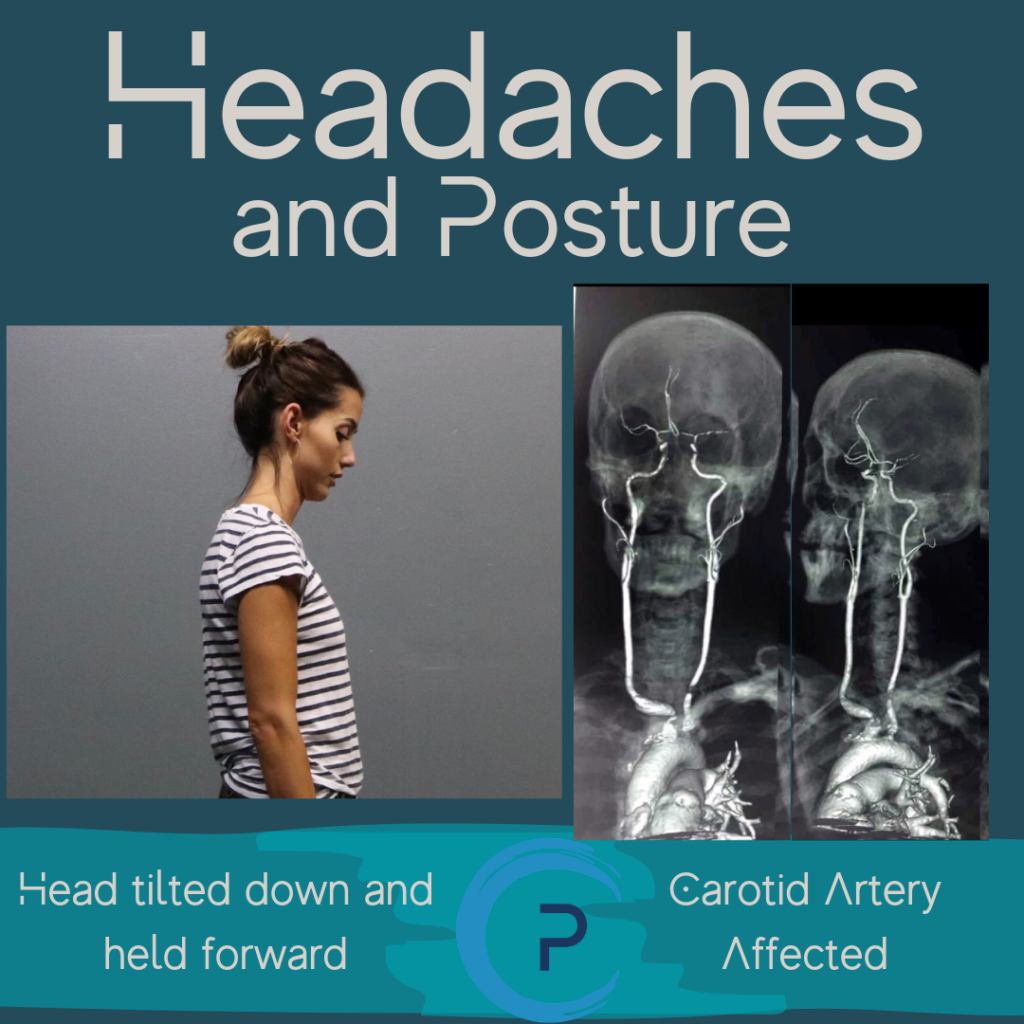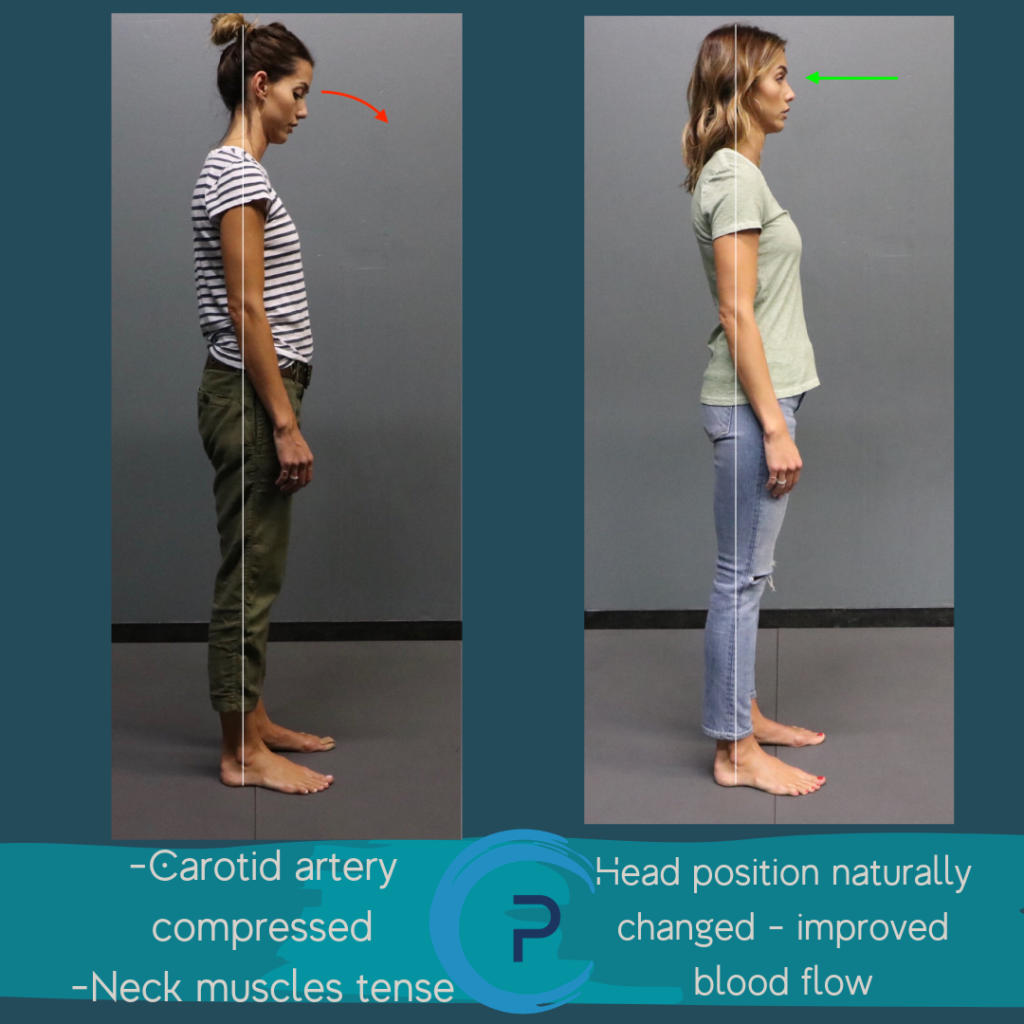
Anatomical Physiology – is the study of how the functions of the body, like circulation, digestion, and respiration, are altered, affected, and impacted by the position of the body which is dictated by the function of the muscles.
For this article, let’s dive into headaches and link how they are impacted by posture and muscle function.
We could choose anywhere to start, but for this topic, let’s start with the hips.
Let’s pretend, you have a sedentary lifestyle, which is another way of saying you don’t move much, or as often as you should. The muscles in the hips lack consistent orders to move because of the constant sitting, so they adapt to the lack of movement and tighten up – or in other words, become dysfunctional.
Your pelvis located directly above the now dysfunctional hips, will alter its position to help compensate for the hips by tilting forward, backward, one side might hike up higher than the other, or the pelvis will rotate clockwise/counter clockwise. Regardless of how it responds, your pelvic position is altered from the hip dysfunction.
The spine, sitting on top of that altered pelvis, looses its ability to bend, twist, flex, and extend. In other words, the muscles surrounding the spine don’t receive orders to function daily, so they too adapt, stiffen, atrophy, and lose the ability to properly function.
Shoulders are located above all of that, and have the dysfunctional hips, pelvis, and spine to now figure out how to work with. They are going to massively compensate to help in whatever way they can – usually this is done through tightening up as well.
When this happens, your head is going to shift forward, and tilt up, or down, as a means to “find balance” on top of everything happening below.
Over time, the neck muscles stiffen and tense up.
Here’s where all of that relates and ties in with headaches.
You have 2 carotid arteries (shown above) that supply blood, oxygen, and nutrients to the head, along with MILES of circulatory tubing that do the same. But now, all that blood has to make its way through tense muscle tissue, and altered body positions (forward head) affecting its ability to get to the head, and drain from the head.
Think of the headache as a traffic jam of blood not fluidly being able to go in and out of the head.
The longer your head stays there, and the longer your muscles go without function, the more the muscles tense up to support the forward weight of the head, and the worse that traffic jam gets. This means it is now more work to get your blood to your head, and drain from your head.
Gravity is an uphill battle. Your blood already has to go against gravity to get to your head. As soon as the head shifts forward and muscles tense up, you are exponentially increasing the work that has to be done for this function to happen, which over time drastically alters your circulatory systems ability to delver blood where it’s needed. Circulation is massively affected.

So, how do you fix?
Well, for starters, you just took your first step by zooming out and learning how your circulation can be affected by posture and the way you’re muscles function.
The next step, is changing how your body functions. Per the example discussed above, working with your body to increase the function of the hips, pelvis, spine, and shoulders, will translate to how the muscles in your neck work, which will change the position of your head – ultimately having a positive impact on your ability to circulate blood!
All of this positive change can be done through our online program – Pain Academy Online! You’ll learn how to understand where your dysfunctions are by learning how to assess your movement. Then, you’ll be exposed to various movement sequences to help restore function to your entire body.
When your muscles work better, your posture changes, and every system within your body has a greater capacity to function leaving you with less symptoms being caused by a dysfunctional body.